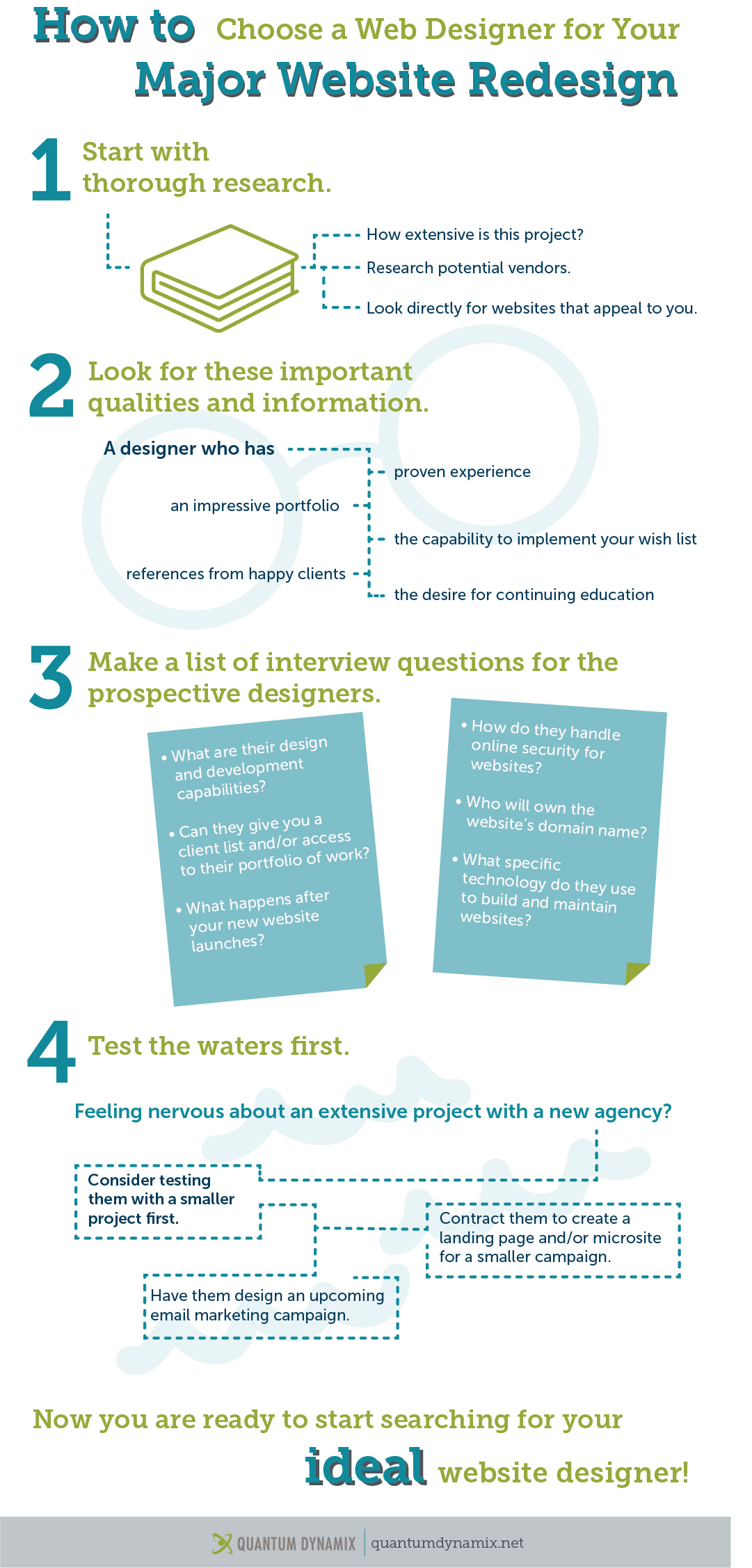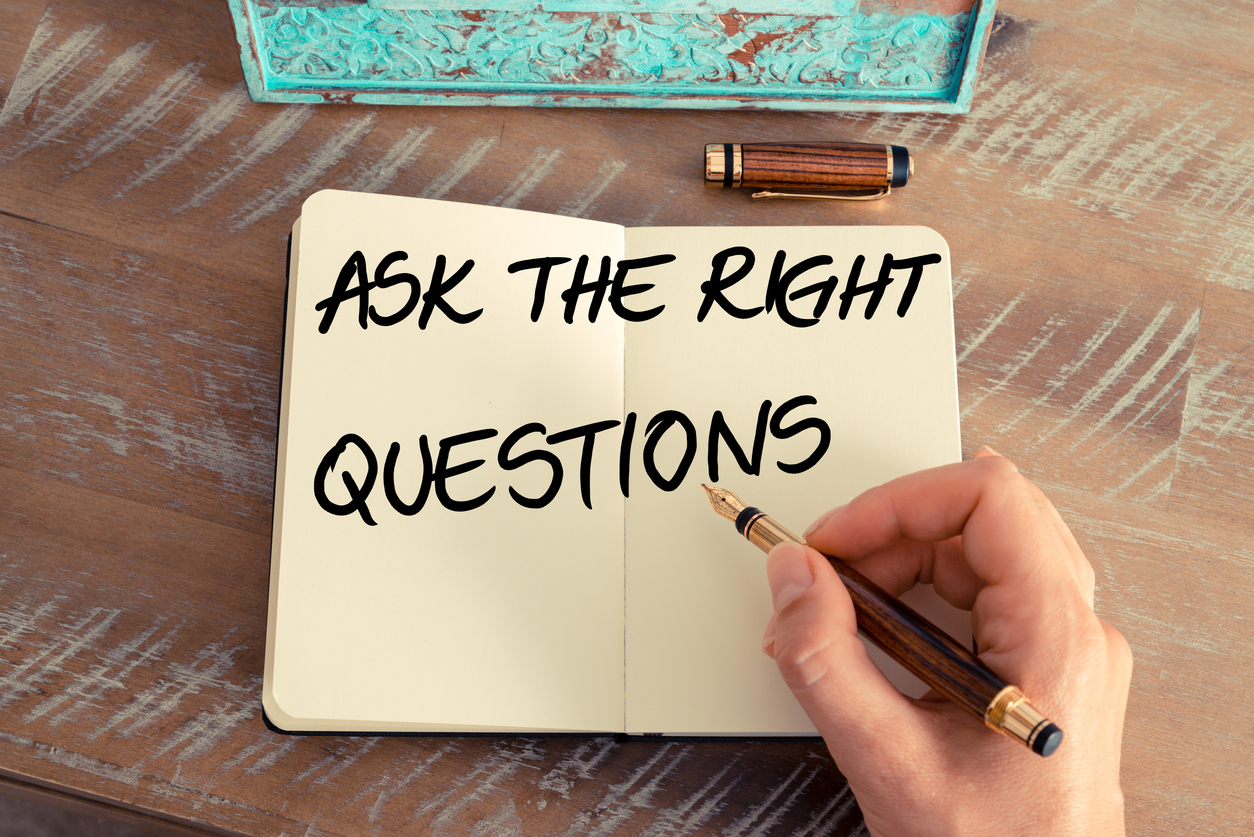How to Choose a Web Designer for Your Major Website Redesign [Infographic]
| November 1, 2017 | Posted in Buyer's Journey
Did you know that 48% of people named website design as the primary factor in determining a business’ credibility? It’s no wonder that 54% of small businesses have decided to outsource these vital web design projects to expert agencies and developers. Discover how to choose a web designer that you won’t regret by following the below advice!

Start with thorough research.
Before you even send out any RFPs or hold interviews, you need to conduct thorough research. This research starts with knowing the scope of your own project. How extensive is this project? How many pages will your website need? Are there any special features on your wish list? Are you looking for someone who can help you with copywriting and SEO, or just the design components? Narrowing down your own wish list will help you narrow down potential vendors as well.
Next, it’s time to research potential vendors. Word-of-mouth recommendations are one tried and true method. If you know someone who’s extremely satisfied with their website, ask who designed it! Ask your LinkedIn circle and other peers who they’ve had success with.
Another method is to look directly for websites that appeal to you. If you’re impressed with a specific website, reach out to the business directly. They can tell you if an outside agency did the work. You can also consider simply googling local businesses who offer the services you require.
Look for these important qualities and information.
No matter what agencies end up on your short-list of possibilities, look for the following qualities and information to help you narrow down the right designer for your business.
- Look for a personality that meshes with your corporate culture – not just extensive experience. Experience matters, but you also want to ensure that the web designer will fit in well with your team.
- Look for a web designer that values continuing education. In this industry, current technology could be obsolete a few years down the road. Make sure they put effort into staying up-to-date with the latest technology.
- Look for a portfolio of work that impresses you.
- Look for client references that speak highly of the web designer.
- Look for a designer who shows genuine interest in your business. They should ask questions to make sure they understand your unique goals and challenges.
- Look for a designer who is capable of implementing your entire wish list. If they aren’t able to complete copywriting, coding, SEO, or any other specific request – they’ll have to outsource it. Or you’ll have to spend more time hiring separate vendors.
Don’t simply rely on online research and reviews to find these answers. If you think you’ve found some great agencies, take the time to interview them!
Make a list of web designing interview questions.

Here are some questions you’ll want the answers to while interviewing any website vendor. These questions will help determine if the agency is the right fit for your business.
The best tip on how to interview a web designer is to ask open-ended questions. Open-ended questions allow a designer to show their passion, communication skills, and individuality. If you ask a trivia question that can easily be googled, you won’t be getting the full sense of who this designer is and how their work might fit into your vision.
Get the answers to these questions.
- What are their design and development capabilities?
- What experience do they have?
- Can they give you a client list and/or access to their portfolio of work?
- How do they stay up-to-date with changing technology in their industry?
- What specific technology do they use to build and maintain websites? We recommend WordPress.
- What is their approach to search engine optimization?
- How do they handle online security for websites?
- What are their fees and payment terms?
- Where do they source their copyrighted images from?
- Who will own the website’s domain name?
- Do they have an established design and development timeline and/or process? Does that timeline meet your required deadlines?
- What happens after your new website launches? Who will maintain the website after launch? What safeguards do they have in case something doesn’t go to plan?
Test the waters first.
If you’re nervous to dive in to an extensive project with a new agency right away, consider testing them with a smaller project first. Have them design an upcoming email marketing campaign. Contract them to create a landing page and/or microsite for a smaller campaign. Working with them on a smaller project first will help you see first-hand how your working relationship will operate. If you’re happy with the initial project, you can move forward with the larger project.
To recap:
- Start your web designer search with thorough research.
- Look for defining qualities and information that set a particular designer apart.
- Make sure to extensively interview a prospective vendor to figure out if they’re the right fit.
- Consider testing the waters first with a smaller project before hiring the new vendor for your major project.
Remember, if you aren’t currently happy with your website vendor, don’t be afraid to break up with them. Discover ‘How to Break Up with Your Current Website Vendor’ here.
Start your research now.
Find website examples that impress you on our portfolio. While you’re browsing, write down the elements of each project that appeal to you. Check out our portfolio now!
